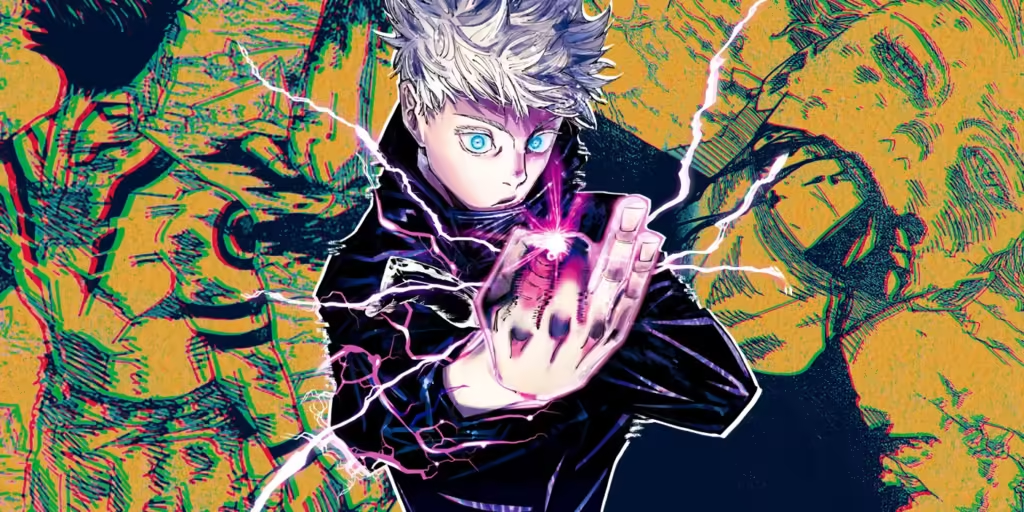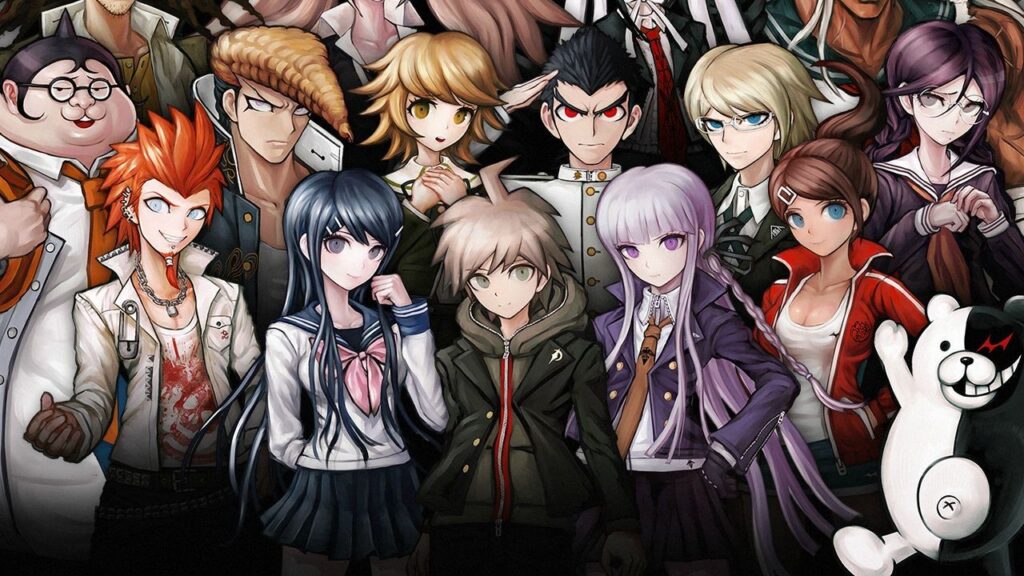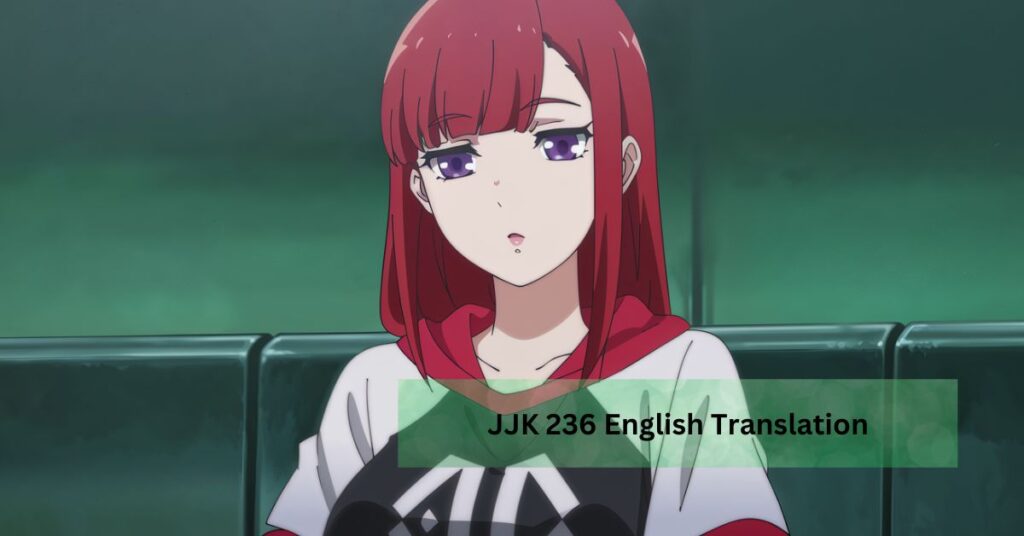Jujutsu Kaisen, a powerhouse in the manga world, continues to captivate audiences with its complex characters and intense narrative.
The English translation of Jujutsu Kaisen Chapter 236 faithfully conveys the chapter’s intense action and emotional depth, ensuring non-Japanese readers fully engage with the story’s key developments and character growth.
This article will explore the critical aspects of the English translation of Jujutsu Kaisen Chapter 236. From the challenges translators face to the nuances of character dialogue, we’ll provide an in-depth analysis highlighting the importance of staying true to the author’s intent.
Introduction To Jjk 236 English Translation:
Overview Of Jujutsu Kaisen:
Jujutsu Kaisen is a widely popular manga that has captivated readers with its mix of supernatural elements and intense action. The story follows Yuji Itadori as he navigates the world of curses and sorcery. Chapter 236 is significant as it pushes the storyline forward, revealing key developments that fans eagerly await.
Importance Of Accurate Translation:
Accurate translations are crucial for non-Japanese-speaking fans to fully enjoy Jujutsu Kaisen. These translations must capture not just the words but also the cultural nuances, emotional depth, and character voices.
Translating manga is challenging due to differences in idioms, cultural references, and the need to preserve the original tone while making the content accessible to a global audience.
Chapter 236 Summary:

Plot Overview:
Chapter 236 of Jujutsu Kaisen continues the intense battle between the Jujutsu Sorcerers and the Cursed Spirits. The chapter focuses on critical confrontations, with strategic maneuvers and powerful displays of sorcery.
Key story arcs advance, particularly those involving Yuji Itadori and his allies, setting the stage for significant future developments. The tension in the story escalates as characters face increasingly dire circumstances, making this chapter a crucial turning point in the series.
Character Highlights:
This chapter spotlights several vital characters. Yuji Itadori grapples with his internal struggle, dealing with the immense pressure of being Sukuna’s vessel. Megumi Fushiguro’s resolve strengthens as he steps up to protect his friends, showcasing his growth as a sorcerer.
Additionally, fans are treated to the much-anticipated return of Nobara Kugisaki, who reenters the battle with renewed determination, adding a fresh dynamic to the group’s efforts. These moments deepen the characters’ arcs and highlight their evolving roles in the ongoing conflict.
Read: Understanding spreadsheet rectangles nyt In Modern Data Management
Challenges In Translating Jjk 236:
Cultural Nuances:
Japanese manga is often rich with cultural references, idioms, and expressions that do not have direct equivalents in English. In Chapter 236, specific phrases and cultural references require creative adaptation to convey the same meaning without losing the original flavor.
For example, character-specific catchphrases or unique verbal quirks can be challenging to translate while maintaining their intended impact. Translators must balance staying faithful to the source material with making the text accessible and understandable to a global audience.
Emotional Depth:
One of the critical aspects of Jujutsu Kaisen is its emotional intensity. In Chapter 236, moments of psychological struggle and emotional dialogue need to be translated carefully to preserve the characters’ voices and the scene’s emotional weight.
Translators must ensure that the English version conveys the same emotional resonance as the Japanese original, which can be challenging when dealing with subtle or layered emotions expressed through dialogue and action.
Linguistic Challenges:
Japanese language features, such as wordplay, kanji with multiple meanings, and honorifics, add another layer of complexity to the translation process. For instance, puns and double entendres are common in manga and can be challenging to replicate in English without losing their cleverness.
Additionally, honorifics like “-san” or “-kun” convey social dynamics and respect levels, which might not have direct equivalents in English. Translators must decide whether to retain or adapt these honorifics to fit the English language context, often requiring a delicate balance between authenticity and readability.
Comparing Official And Fan Translations:

Overview Of Translation Differences:
The official translation of Jujutsu Kaisen Chapter 236 prioritizes accuracy and consistency, staying true to the original text while making it accessible to a broad audience. Fan translations, on the other hand, can vary widely in tone and style.
While some fan translations aim for a more literal approach, others might prioritize readability, occasionally sacrificing strict accuracy. This can lead to differences in how dialogue is presented, with fan translations sometimes offering more creative interpretations.
Tone And Accuracy:
The tone in official translations is usually more polished and consistent, reflecting professional editing and a deep understanding of the source material. Fan translations may vary in tone, with some capturing the spirit of the original more effectively while others might need more professional oversight.
Accuracy in official translations is generally higher. However, some fans argue that specific fan translations capture cultural references and wordplay better, given their flexibility and less rigid adherence to formal translation rules.
Readability:
Official translations are typically more readable, with clear and concise language that ensures a smooth reading experience. Fan translations, while sometimes more direct or flavorful, can suffer from inconsistencies or awkward phrasing that might disrupt the flow of the story.
However, some readers prefer the raw and unfiltered style of fan translations, which can feel more authentic or accurate than the original Japanese.
Pros And Cons Of Each Translation:
Official translations offer professional quality, consistency, and legal access, ensuring a reliable reading experience. However, they may need more immediacy and sometimes the cultural depth that passionate fan translators provide.
Fan translations are often faster to release and capture unique aspects of the source material. Still, they can be hit-or-miss regarding quality and accuracy, potentially leading to a varied reading experience. Readers may choose based on their preference for polished professionalism or passionate interpretation.
Read: Understanding Literoticatags – A Comprehensive Guide
Analysis Of Key Moments In Jjk 236:
The Climactic Battle:
Chapter 236 of Jujutsu Kaisen is defined by its intense and pivotal battles. These confrontations showcase the characters’ physical prowess and reveal their strategic minds and emotional states.
The English translation captures the fast-paced action and the high stakes involved, ensuring readers can fully grasp the gravity of each move.
Key moments, such as the clash between Yuji Itadori and the cursed spirits, are translated with a focus on maintaining the original text’s intensity and fluidity, preserving the narrative’s momentum.
Emotional And Psychological Themes:
Beyond the physical battles, Chapter 236 delves deep into the characters’ emotional and psychological struggles. Yuji’s internal conflict, Megumi’s determination, and the protagonists’ emotional weight are critical to understanding their motivations and future actions.
The English translation effectively conveys these themes, ensuring that the emotional depth is not lost in translation. Subtle cues in dialogue and character interactions are carefully handled to retain the psychological complexity, making the chapter’s emotional resonance clear to English-speaking audiences.
The Role Of Artwork In Translation:

Importance Of Visual Elements:
The artwork in Jujutsu Kaisen is integral to its storytelling, adding depth and emotion to the narrative. In Chapter 236, the visuals amplify the intensity of battles and characters’ emotional states.
Elements like text bubbles and sound effects are crucial in maintaining the flow and atmosphere, requiring careful translation consideration to ensure they seamlessly complement the story.
The Role Of Text Bubbles:
Text bubbles are essential for guiding the reader’s experience. They must fit the translated dialogue without overcrowding the artwork.
In Chapter 236, the placement of text bubbles enhances the pacing and intensity of scenes, making collaboration between translators and typesetters vital to preserving the original intent and narrative rhythm.
Sound Effects And Onomatopoeia:
Sound effects add an auditory layer to the visuals, enhancing the action and mood. Translating these onomatopoeic elements in Chapter 236 involves finding English equivalents that match the original tone and integrate smoothly with the artwork, ensuring the scene’s impact is preserved.
Visual-Linguistic Interplay:
The interplay between visuals and text in Jujutsu Kaisen requires a delicate balance. Translators work with typesetters to adjust text length and placement, ensuring the translation supports the artwork without disrupting the visual flow, particularly in action scenes where concise text focuses on dynamic visuals.
Read: Myliberla.com Protection And Community – A Comprehensive Guide
Conclusion:
In conclusion, the English translation of Jujutsu Kaisen Chapter 236 is a critical bridge for global fans, ensuring that the intense battles, profound character developments, and emotional nuances are conveyed faithfully. The translation process involves navigating cultural nuances, maintaining emotional depth, and balancing visual and linguistic elements. Official and fan translations offer unique perspectives, strengths, and challenges. Overall, the translation plays a crucial role in preserving the original work’s essence, fully immersing non-Japanese readers in Jujutsu Kaisen’s world.
FAQ’s:
1. How Does The Translation Process Impact The Reading Experience Of Jujutsu Kaisen Chapter 236?
The translation process significantly affects the reading experience by preserving the tone, cultural nuances, and emotional depth of the original Japanese text in English. A well-executed translation helps non-Japanese readers understand the story’s subtleties and maintain the intended impact of key scenes.
2. Are There Any Specific Challenges In Translating The Dialogue Of Key Characters Like Yuji Itadori In Chapter 236?
Yes, translating dialogue for critical characters like Yuji Itadori involves maintaining their unique voice, emotional depth, and cultural context. Yuji’s internal struggles and interactions with other characters require careful handling to ensure that his personality and the gravity of his situation are accurately conveyed in English.
3. Why Do Some Readers Prefer Fan Translations Over Official Ones?
Some readers prefer fan translations because they often appear faster and may capture cultural nuances or slang in a more relatable or authentic way. However, fan translations can vary in quality and may not always align with the original author’s intent as closely as official translations.
4. How Do Translators Handle Japanese Honorifics And Titles In Chapter 236?
Translators typically decide whether to retain Japanese honorifics like “-san” or “-kun” or to adapt them into English equivalents depending on the context. Retaining these can preserve cultural authenticity while adapting them, making the dialogue more accessible to English readers.
Read more:


